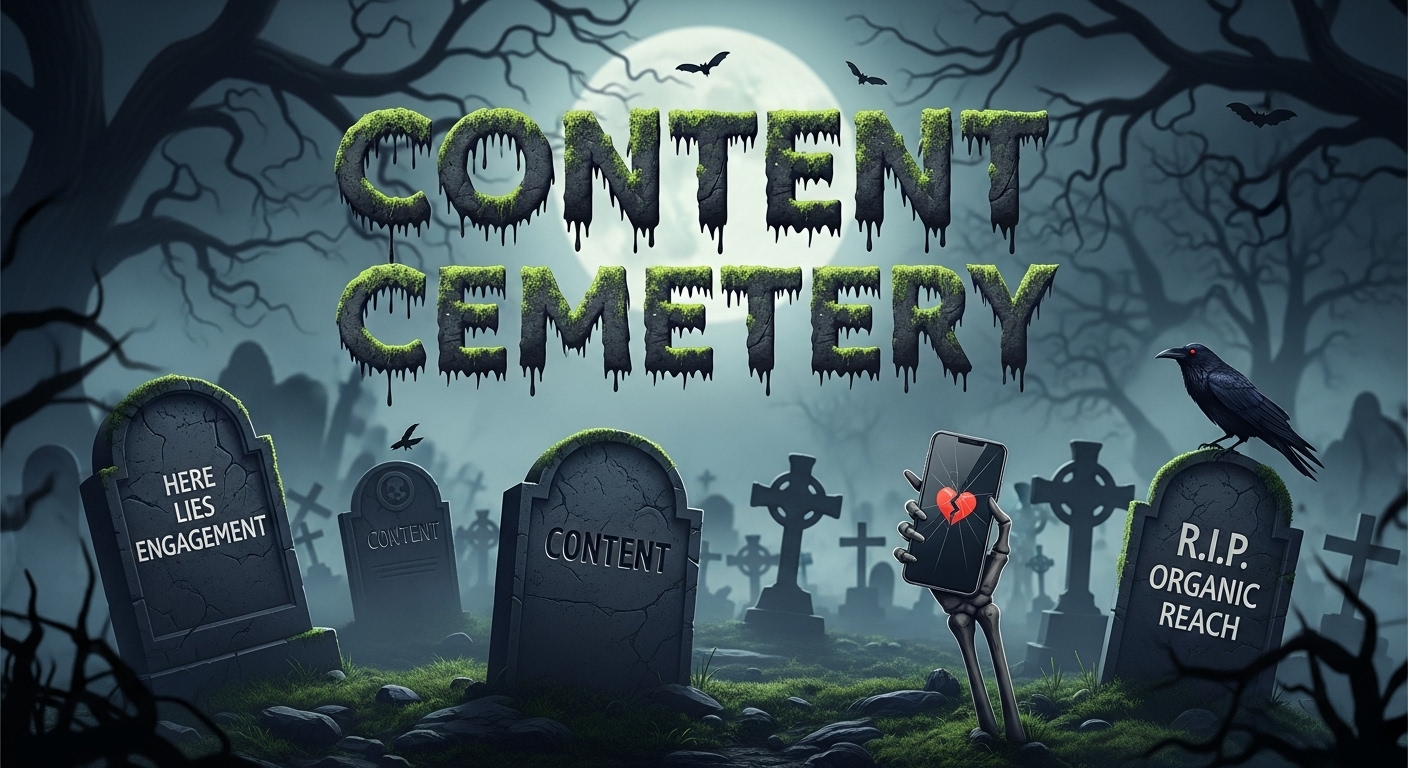
How (and Why) to Run a Competitive Audit + Mistakes to Avoid

If you’re revisiting your content marketing strategy or looking for fresh ways to stand out among your competition, a competitive audit is a crucial tool to give you an edge, especially as you prioritize how you spend limited marketing resources. In this article, Erin Malloy, Associate Director, Content Strategy & Analytics and resident competitive analysis guru at Knotch, explains:
- Why competitive audits are an important and underrated tool in marketing strategy
- When is the best time to do an audit
- The steps in a competitive audit
- Where companies fall flat during the auditing process
- What actionable steps you can take from the analysis
Ready? Let’s get to it.
Why competitive audits are key to strategy
Whether you’re thinking about changing your approach to content, looking to refine a specific focus area of the business, or exploring new ways to stand out from your competitors, a competitive audit is an ideal starting point. “Competitive audits provide real-time benchmarks within your industry and identify competitor weaknesses or gaps and unveil opportunities for your own brand to shine,” says Malloy. This is especially important if you’re in the process of revising your marketing strategy. Audits can help you ensure your themes, tactics, and general marketing activities align with larger business outcomes.
When is the best time to do a competitive audit?
“The best time to do a competitive audit really depends on the maturity of your strategy as well as where your needs fall,” says Malloy. An annual competitive audit can be ideal for identifying broad, sweeping trends within your industry. If you’re looking to redirect your strategy or make significant changes, a larger audit window offers a clearer picture of where the opportunities are within your industry. Quarterly or even monthly audits can provide more real-time actionable insights. A shorter audit window is preferable for industries that are changing rapidly, such as financial services, where topics and trends are shifting.
What does a true competitive audit look like?
Step 1
Identify your competitors. Anywhere from three to five is a good starting point, using a mix of both indirect and direct competitors from within your industry.
Step 2
Decide on your audit categories. Depending on what you’re looking to glean from your audit, this might include:
- A deep dive into content formats or overall themes related to your product or service
- Priority audiences
- Paid and owned content
- Distribution channels (websites, social media, etc.)
Step 3
Set your audit criteria. It’s best to have a mix of both quantitative and qualitative criteria in your audit. Some examples of quantitative criteria include: publishing volume across channels, keyword usage, word count, publishing cadence, other metrics from third-party tools, etc. For qualitative criteria, you’ll primarily be looking at your brand’s distinctness of your content or themes.

Step 4
Conduct your audit. The most laborious of all steps, this is done with a mix of crawler tools in addition to significant labor.
Step 5
Outline your observations within each of your previously identified audit categories. Translate these observations into actionable insights that can then inform your content and marketing strategies.
What mistakes do most companies make when conducting a competitive audit?
There are two keys to success to doing a good competitive audit.
1. Have resources at the ready
Ensure you have the right resources in place to do your audit effectively. These resources include time, tools, and knowledge.
- Time: An audit can take four to six weeks and 100 or more hours, on average.
- Tools: The right tools can significantly increase efficiency. For example, a crawler, such as Screaming Frog, makes collecting competitor data exponentially less arduous and offers data to back up your observations.
- Expertise: Once you gather all of your data, you’ll need the skills to turn it into actionable insights for your team.
“Often, we see marketing teams were given two days to put together a single slide for a common strategy deck, so they think about big, broad topics like tone of voice or themes,” says Malloy. “Without the right tools, they end up doing an entirely manual crawl but don’t have the six weeks you’d need to do it effectively.”
2. Set up meaningful criteria
When identifying criteria at the onset, it’s important to define your audit categories, choose the right competitive set, and lay out the key questions you’re hoping to answer with the audit. And of course, you’ll want to gain alignment with all internal stakeholders before beginning the process. “Companies can often be short sighted in terms of identifying the key questions they want the audit to address,” says Malloy. “If the criteria isn’t comprehensive, an audit can sometimes lead to more questions and confusion than answers.” After all, it’s much easier to collect all the data you need and look at your competitors once, thoroughly, rather than erring on the side of being too narrow or focused and having to do rework.
What if you don’t have direct competitors?
Often, companies will hesitate on a competitive audit because they perceive themselves as a category creator or are in an industry without a lot of direct competition that cover their range or product offerings or content systems. The fact is: Everyone has competitors. Even if you have a lot of lines of business or are a mix of B2B and B2C, think about competitors within each of the categories. You can still create a similar competitive set — it might just be made up of two from each category. “You might have competitors that cover your content themes and a different set that are aiming for the same target audience,” says Malloy. “You might start to look at quantitative trends and volume, doing fewer apples-to-apples comparisons across the entire competitive set but looking at categories in isolation.” Even indirect competitors can generate good takeaways and inspiration to apply to your business or industry.
What actionable steps can you take from the analysis?
There are many actionable steps you can take after completing a competitive analysis.
Evaluate your themes
After an analysis, you’ll better understand your own content themes in context of competitor activity. You can identify where there is white space and where there is a lot of saturation and you want to avoid.
Seen in the real world
Morgan Stanley stands out on the topic of sustainable investing with a regular newsletter, very robust landing page, and featuring a lot of internal and external thought leaders. However, there’s little distinctiveness in how they’re communicating their point of view. Their breadth might appear daunting, but there are distinct gaps where competitors can create distinct themes within sustainability. That’s what Goldman Sachs did in carving out a niche in sustainable investing dubbed, “carbonomics.”
Shore up your customer journey
A competitive audit can also help identify gaps within your customer journey (both in your own content and your competitors’) that you can work to fill.
Seen in the real world
An audit could uncover brands that are excelling in the use of contextual CTAs that drive customers to product, solution pages, or other high value actions and give you inspiration to improve your own. McKinsey, for example, does a good job of weaving relevant CTAs throughout a content asset. Instead of holding a CTA to the end of a piece, they incorporate them in the upper third, knowing that many readers might not make it to the end of a 2,000-word article.

Serve the underserved
Another core learning from a competitive analysis is where there are underserved audiences in your industry. What’s your next trailblazing opportunity?
Seen in the real world
When Salesforce launched Salesforce+ in 2020, there was a growing need for on-demand, digital events, thanks to the COVID-19 pandemic. No one else in the software industry was doing demand streaming at scale, and there was a desire for community among their business audiences.
“It was the perfect example of a content trend merging with an audience need, alongside clear competitive white space,” says Malloy.
Completed an audit? Here’s what to do next
If you’ve completed a competitive audit, don’t forget to check in to see if your efforts have paid off.
For a large annual audit to kickstart competitive intel, a quarterly check-in can be very valuable to keep you timely with themes and topics, ensuring you don’t fall far behind when the market changes. However, you might not notice the full benefits of your efforts until a year later, Malloy cautions. For fast-moving industries, a monthly or weekly check-in might be necessary. Market volatility, current events, and other factors can cause data and reporting to stale quickly. In this scenario, narrowing your audit criteria will be necessary.
For example, if you’re concerned about content related to an event, you might only be looking at content in the week leading up, during, and directly after the event. The shorter the window, the more focused your criteria need to be.
Commit to regular audits
The primary purpose of any audit is to help identify white space, angles, or themes that you can then incorporate into your strategy, with a secondary benefit of keeping tabs on your competition. Whether you do them annually, every six months, or more frequently, competitive audits are extremely beneficial in any marketing strategy exercise, especially if you’re reviewing existing efforts. Make competitive auditing a regular part of your strategy work to ensure relevance and direction.
....................
Want to learn more about the competitive auditing process or how it can help you renew strategy and find areas of opportunity? Feel free to reach out to Erin Malloy, Associate Director, Content Strategy & Analytics at Knotch, with more questions.
Ready to start an audit or need strategic guidance on your content operations? Learn more about Knotch Consulting.
Become a thought leader
Become a thought leader
Trusted by the largest (and now smartest) brands in the world.
“Before Knotch we did not understand what content was driving business results. Now we understand which content moves the needle. Knotch’s cohesive reporting and insights paint a real picture of what’s happening on our website instead of the patchwork quilt that comes from a Google Analytics approach. With Knotch we have been able to re-prioritize ad spend, route better leads to our SDR team, and inform our content development initiatives.”

"The Knotch platform ensures that we deliver high-performing content tailored to young home shoppers, enhancing their experience and driving better business outcomes.”

"Our partnership with Knotch has been highly successful, empowering us to leverage data-driven insights and refine our content strategy.”









